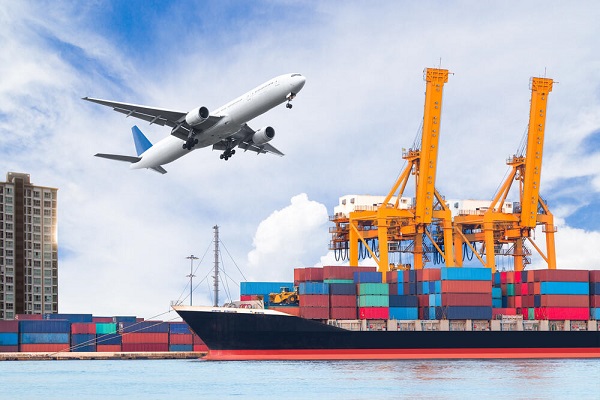In the fast-paced world of logistics and supply chain management, choosing the right transport method for cargo is crucial for businesses aiming to optimize efficiency and cost.
Two dominant methods for transporting goods—air and sea—each have their own advantages and disadvantages. Understanding these factors can help businesses make informed decisions that align with their specific needs and circumstances.
This article explores the differences between air and sea cargo transportation, highlighting their pros and cons, costs, speed, and best use cases.
Understanding Air Cargo Transport
Advantages of Air Cargo
- Speed: Air cargo is the fastest mode of transport available, making it ideal for time-sensitive shipments. Goods can typically be delivered within a few days, regardless of the distance.
- Reliability: Airlines have fixed schedules, which can make air freight more reliable in terms of arrival times. This predictability is essential for businesses that depend on just-in-time inventory management.
- Reduced Theft and Damage: The controlled environment of air transport reduces the risk of theft and damage, particularly for high-value goods.
- Global Reach: Air cargo can reach remote areas that might not be easily accessible by sea, providing a wider range of service options.
Disadvantages of Air Cargo
- Higher Costs: Air freight is significantly more expensive than sea freight. Businesses must weigh the benefits of speed against the increased costs.
- Weight and Size Limitations: Airlines impose strict weight and size limits on cargo, making it unsuitable for larger shipments.
- Environmental Impact: Air transport has a higher carbon footprint compared to sea transport, raising concerns for environmentally conscious businesses.
Understanding Sea Cargo Transport
Advantages of Sea Cargo
- Cost-Effectiveness: Sea freight is generally more economical for large shipments. It allows businesses to transport bulky goods at a lower cost per unit.
- Capacity: Ships can carry a substantial amount of cargo, making it ideal for large shipments or bulk goods, such as raw materials.
- Less Environmental Impact: Sea transport is more fuel-efficient per ton-mile, making it a more sustainable choice for businesses prioritizing environmental responsibility.
Disadvantages of Sea Cargo
- Longer Transit Times: Sea freight can take weeks or even months, depending on the destination. This slower pace can be a disadvantage for businesses with urgent delivery needs.
- Unpredictable Delays: Weather conditions, port congestion, and other unforeseen events can delay shipments, impacting the supply chain.
- Complex Logistics: Shipping by sea often involves more complex logistics, including customs clearance and handling, which can add to the overall time and cost.
Cost Comparison: Air vs. Sea
When choosing between air and sea transport, cost is a significant factor.
- Air Freight Costs: Typically calculated based on weight or volume, air freight costs can be 5 to 10 times higher than sea freight. The costs increase with the speed of delivery and the urgency of the shipment.
- Sea Freight Costs: Sea transport is billed per container (TEU – twenty-foot equivalent unit) and is significantly lower per unit of weight. While there may be additional costs associated with loading, unloading, and customs clearance, these often pale in comparison to air freight costs.
Speed vs. Cost: Making the Right Choice
The decision between air and sea transport ultimately depends on the specific needs of a business:
- Urgency: If time is of the essence, air transport is the obvious choice. Perishable goods, seasonal products, and time-sensitive deliveries benefit from air freight.
- Budget: For businesses with tight budgets or large shipments, sea transport is more economical. This is especially relevant for manufacturers and importers dealing in bulk goods.
- Type of Goods: Fragile, high-value, or perishable items are better suited for air transport due to reduced handling and transit times. Conversely, durable goods, machinery, and raw materials can be transported more cost-effectively by sea.
- Destination: Geographic considerations also play a role. Remote areas may have limited access to air transport, while sea transport is often subject to port accessibility.
Conclusion
Choosing between air and sea cargo transport is not a one-size-fits-all decision. Each method has its unique advantages and drawbacks, and the best choice depends on the specific needs and priorities of a business. By considering factors such as cost, speed, type of goods, and destination, companies can optimize their logistics strategies, ensuring they meet customer demands while managing costs effectively.
As the logistics landscape continues to evolve, staying informed about transport options and trends will empower businesses to make decisions that enhance their supply chain efficiency and competitiveness.
Whether opting for the rapid pace of air freight or the economical bulk capacity of sea freight, understanding these transportation methods is essential for success in the global marketplace.
Also Read
Cold chain logistics in Africa: Challenges, opportunities, and future growth
Cross-border cargo: Navigating customs and regulations


